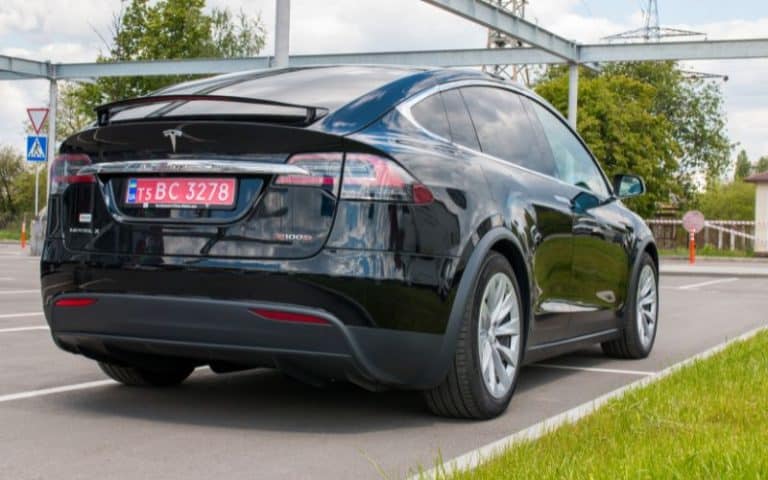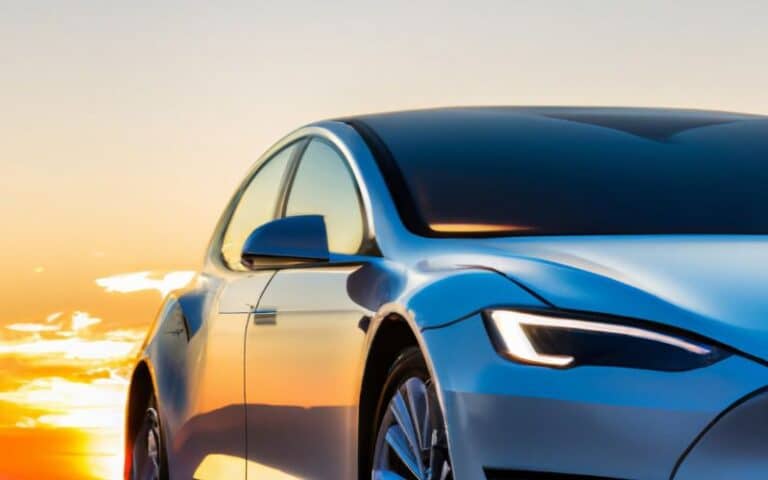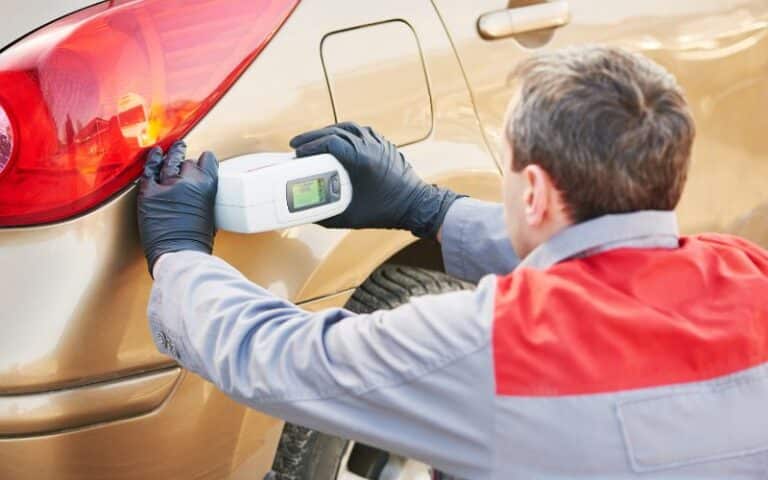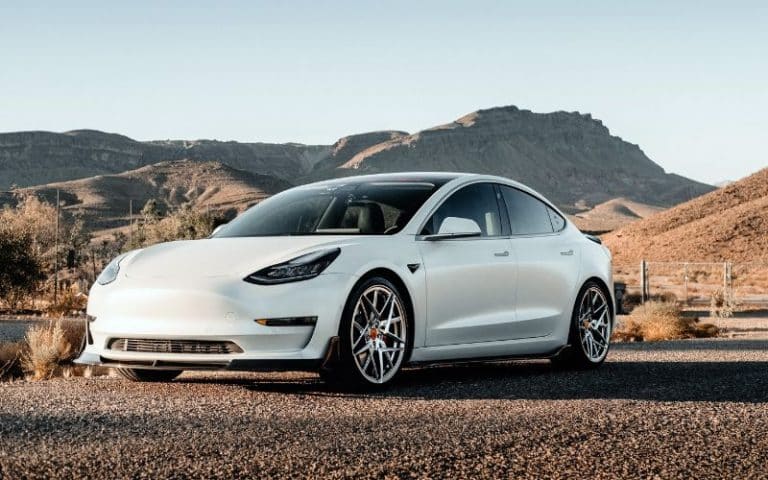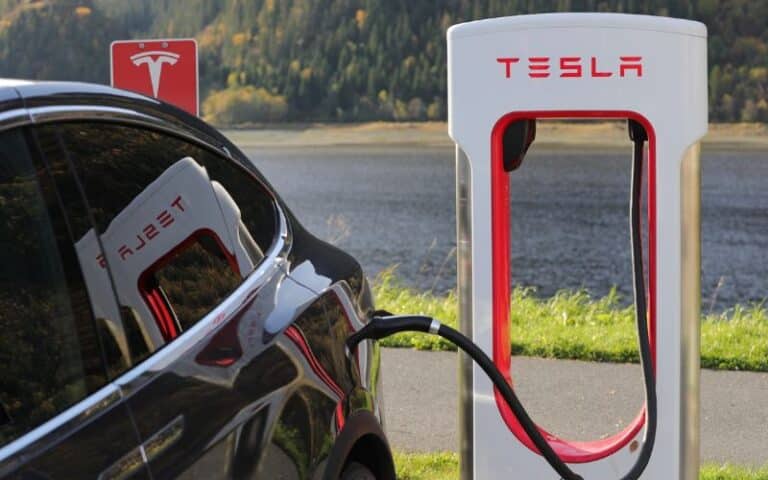Tesla Auto High Beam: Your Ultimate Guide!
When it comes to innovative technology in the automotive industry, few companies can rival Tesla.
Known for their electric cars, Tesla is constantly pushing the boundaries of what is possible regarding safety and convenience features.
One such feature that has garnered a lot of attention is the Tesla Auto High Beam. But what exactly is the Tesla Auto High Beam?
Tesla Auto High Beam is an innovative safety feature that automatically adjusts the headlight brightness based on the surrounding conditions. In essence, the high-beam headlights will automatically turn on and off depending on whether there are oncoming vehicles or insufficient lighting on the road.
In this article, I will explore all you need about the Tesla auto high beam feature.
By the end, you will know how to use the auto high beam feature effectively and troubleshoot when it’s faulty.
What Is Tesla Auto High Beam?

Tesla is a renowned automotive industry known for its innovation and cutting-edge technology.
One of the remarkable features offered by Tesla is the ability of your vehicle to adjust to varying light conditions instantly.
The auto high beam feature ensures optimized visibility during nighttime driving, providing a safer and more comfortable experience for the driver.
The auto high beam feature, also called automatic high beam control, is designed to adjust the headlights’ intensity based on the surrounding conditions.
It allows the driver to focus on the road while the vehicle adjusts the high beam accordingly.
Tesla vehicles with the auto high beam feature utilize an advanced camera, typically behind the windshield near the rearview mirror.
The camera is responsible for detecting the presence of light sources, such as oncoming vehicles or streetlights.
Based on the camera’s input, the auto high beam system adjusts the headlight intensity accordingly to avoid blinding other drivers.
When driving in the dark or under low-light conditions, the auto high beam feature will activate by default to provide maximum visibility.
When the camera detects another vehicle approaching from the opposite direction or within a certain range, it automatically dims the high beam lights.
It would help to know that the adjustment happens swiftly and seamlessly, ensuring safety for all drivers on the road.
In addition to reacting to oncoming traffic, Tesla’s auto high beam system can also detect vehicles ahead traveling in the same direction.
The auto high beam feature prevents the high beams from causing discomfort or distraction to the drivers in front, as it automatically adjusts the intensity to avoid blinding them.
Having auto high beams in Tesla vehicles demonstrates the company’s commitment to prioritizing safety and comfort for its customers.
With this feature, drivers can enjoy improved visibility and reduced effort in adjusting their headlights manually.
How to Turn on the Auto High Beam in Tesla?
If your autopilot has the updated feature, the auto high beam will turn on when you enable the autosteer.
Generally, the auto high beam feature is the default setting for all Tesla vehicles.
Here is what you need to do to turn on the Auto high beam in Tesla.
- Go to the control menu and tap on the light control icon.
- Next, press and select the auto high beam to activate the feature.
Alternately, pull the turn signal shaft in your direction and choose auto high beam in the touchscreen’s lights popup menu.
Pulling the turn signal shaft in your direction allows you to turn on the highlights temporarily.
And up until you let go of the shaft, the highlights will stay activated.
Also, if you want to flash the auto high beam, pull the shaft towards you and release it immediately to flash the high beam briefly.
When enabling the auto high beam, the system will use the car’s front camera to detect other vehicles and adjust the headlight brightness accordingly.
How to Turn Off Auto High Beam in Tesla?
An auto high beam is an essential safety feature on Tesla vehicles. Regardless, not all Tesla car owners like how it automatically turns on.
However, you can easily turn off Tesla’s auto high beam if you are uncomfortable with how it switches from high to low when an approaching car emits light.
Follow the simple steps below to turn off a Tesla vehicle’s auto high beam feature.
- To begin with, go to the settings menu on the car’s touchscreen display.
- Select the lights option, then turn off the auto high beam.
Alternatively, there is a lever or shaft on the left side of the steering column you can push or pull to toggle the auto high beam functionality.
You can easily use the option to turn off your car’s auto high beam feature and regulate the lighting yourself.
Turning off the auto high beam feature allows you to adjust the headlights when necessary.
As such, always switch from low to high beams and vice versa depending on the road and traffic conditions for enhanced visibility and safety.
What Automatically Triggers Auto High Beam in Tesla?
One of the remarkable features Tesla offers is the auto high beam. The feature instantly activates when you engage the autosteer.
The auto high beam feature ensures safer vision during the night and provides a cautious and more safe driving experience.
When you activate the Auto High Beam, the headlights will automatically adjust to a low beam if there is light in front of it, such as from an approaching car.
It would help to know that the auto high beam is re-activated anytime you enable the autosteer.
To control the auto high beam feature in a Tesla vehicle, ensure you enable it in the vehicle settings.
Once confirmed, you activate or deactivate the auto high beam feature through the controls provided on the steering column.
While the auto high beam is a safety feature and gets triggered once you enable the autosteer, it would help to note it has restrictions and is intended as a help.
The driver must set the headlights for the current driving situation and weather.
How to Turn Off Auto High Beam in Tesla Autopilot?
When owning a Tesla, the Autopilot feature is undoubtedly one of the most impressive and convenient additions.
Tesla’s Autopilot feature is well-known for its advanced capabilities in assisting drivers with various aspects of driving.
However, as with any technology, certain aspects may not always meet every driver’s preferences.
One such feature is the auto high beam function, which automatically controls the headlights by switching between low and high beams based on road conditions and traffic.
Although the auto high bean feature enhances safety and visibility, some Tesla drivers may find it necessary to temporarily or permanently turn off the feature for certain reasons.
To begin with, it could be due to personal preference. Generally, some drivers prefer to manually control their headlights, feeling more in control of their vehicle’s lighting system.
In addition, you will not require high beams in specific driving scenarios, such as avoiding potentially dazzling other drivers in certain situations.
Regardless of your reasons, here is how to turn off the auto high beam in Tesla’s autopilot.
- Start by navigating through the Autopilot menu on the touchscreen display until you find the Lights option.
- Once you locate the lights option, tap on it to access the light settings.
- You will see a list of light-related functionalities, including auto high beams.
- Now, toggle the switch corresponding to the auto high beam to the off position, effectively turning off the feature.
Understanding how to operate the auto high beam feature in Tesla Autopilot is equally essential.
By default, an auto high beam triggers automatically when the vehicle detects low ambient light conditions.
However, it is worth noting that Tesla vehicles primarily rely on their cameras, sensors, and data analysis to determine when to engage auto high beam.
Factors such as streetlights, oncoming traffic, and the presence of other vehicles play a significant role in this determination.
In summary, manually turning off auto high beams in Tesla Autopilot gives drivers increased control and flexibility.
Following the steps outlined in this article, you can easily turn off or on the auto high beam feature based on your preferences and driving conditions.
Always be cautious when manually adjusting the headlights, prioritizing safety and visibility.
Why Is My Tesla Auto High Beam Not Working?
The basis of the auto high beam feature is to ensure clear sight while driving in low-light situations without causing discomfort or blinding other motorists.
However, it’s worth noting that the Auto High Beam feature may not always work perfectly in all situations.
Certain factors, weather conditions, road markings, and reflective surfaces, can affect the system’s accuracy.
For instance, if there is heavy rain or fog, it may not be able to detect other vehicles, leading to potential issues accurately.
In such cases, you should manually control the high-beam headlights or switch to low-beam headlights to ensure optimal visibility and safety.
However, certain situations will require you to troubleshoot or call on a professional for a proper check and fixing.
Some other reasons why your Tesla’s high beam will not work include the following.
- If your vehicle has a faulty high beam sensor, the feature will not work.
- A faulty or wrecked high beam switch won’t work.
- The feature won’t work with a low car battery charge.
- Also, a high beam won’t work with a defective relay or blown-out fuse.
Overall, Tesla vehicles offer a convenient control stalk on the steering column, allowing the driver to easily switch between high and low beams.
How to Troubleshoot?
Troubleshooting the auto high beam feature in Tesla vehicles is relatively straightforward.
If you experience any issues with the Auto High Beam feature, there are some troubleshooting steps that you can try to know what’s wrong.
To begin with, ensure that the front camera on the vehicle is clean and free from any obstruction.
It would help to know that dust, dirt, or debris on the camera lens can hinder its ability to detect other vehicles accurately.
In addition, it is crucial to keep the vehicle’s software up to date.
Tesla regularly releases software updates that address various issues and improve the performance of their vehicles.
By keeping the software current, you can ensure you have the latest features and bug fixes, including any updates related to the Auto High Beam feature.
Contact Tesla’s customer support or visit a service center if you can’t determine what’s wrong.
While auto high beam is a great innovation, it has some setbacks. Check out some of the pros and cons of the auto high beam feature in the table below.
| Pros | Cons |
|---|---|
| Auto high beam provides optimal sight. | There is room for technological error. |
| Safety is guaranteed when driving in low light. | Weather conditions affect accuracy. |
| Auto high beam enhances driving flexibility. | Errors can lead to accidents. |

